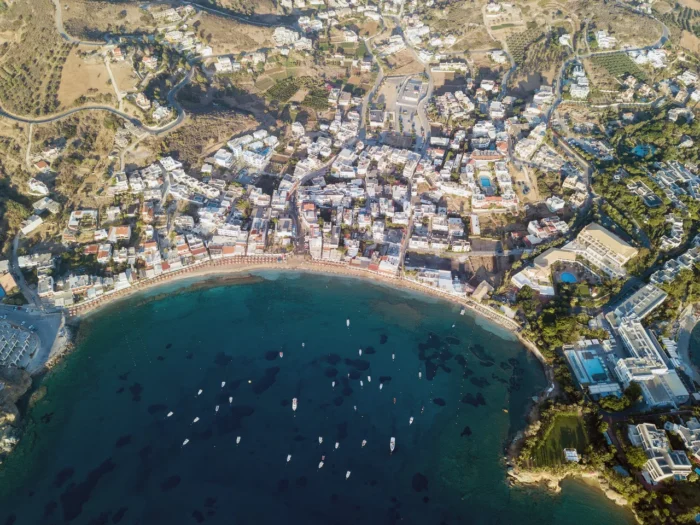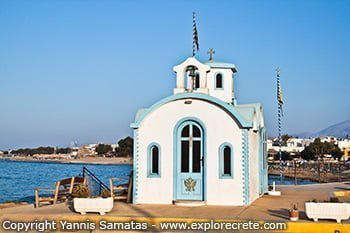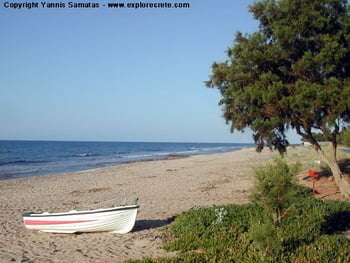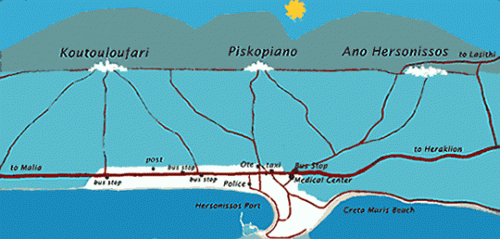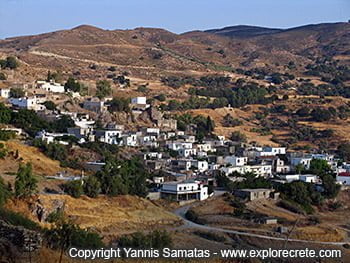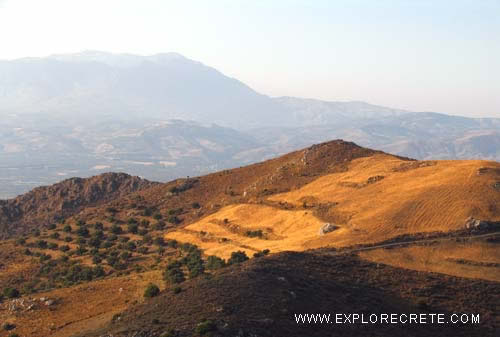Kamilari History | Minoan Tomb at Kamilari
History of Kamilari
Kamilari was inhabited from Early Minoan times. This is demonstrated by local finds, such as the Minoan tholos tomb discovered a little outside the village.
The name Kamilari, from kamilaris, meaning “camel-driver”, was bestowed during the Byzantine period. The village is mentioned by this name by Castrofylaca, who recorded 77 inhabitants, while its earliest-known mention in the Venetian archives is in 1370, as a fief of Andrea Buffo.
In 1959 a tholos tomb (also known as a beehive tomb) dated to the early Neopalatial Minoan period was discovered near Kamilari. It consists of five small rooms with an inner courtyard set outside the tomb itself. It is thought that the tomb had a wooden roof supported on a concrete base.
Epimenides, one of the Seven Sages of antiquity, lived in the village of Metochi just outside Kamilari. According to legend, he lived 157 or 299 years, spending 57 of them in a deep sleep.
Later, in historical times, when the coasts of Crete were plagued by pirate raids, Kamilari found itself in an ideally located far from the sea. Its position on the hilltops ensured a good view of the plain and coast on the one hand, and provided better defences for the inhabitants in case of a raid on the other.
The tholos tomb at Kamilari
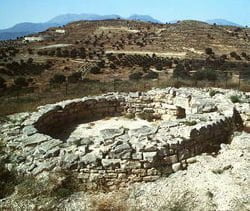
The Minoan tholos tomb at Kamilari was discovered 3 km west of Phaistos, on the hill of Grigori Korfi, about 80 m high. It was built on the north side of the hill, in a spot with a panoramic view of the Asterousia Mountains, Psiloritis and the Messara Plain.
The tomb was discovered in the summer of 1959 following the excavations by Italian professor Doro Levi, who dated it to circa 2000 BC, detailing its historical phases on the basis of the cult and funerary finds. The tomb was used at different times, in 1800 BC, 1700 BC and 1500 BC – this last is the date of most of the offerings found during the excavation.
The Kamilari tomb was half underground, built in the usual tholos tomb method, of stones of varying sizes and mud. It is quite large, 2.15m high, with circular walls 1.75m thick and an outer perimeter measuring 33.8m. The entrance to the tomb faces east and was sealed with a large slab measuring 1.15 x 1.05m.
The tomb consisted of five smaller rooms with an inner courtyard which was located outside the tomb. The tomb had a wooden roof set on a concrete base.
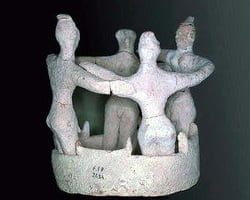
The tomb contained significant finds now housed in Heraklion Archaeological Museum. They include a clay figurine of worshippers and a statuette of four dancers in a circle, resembling a modern Cretan dance, now known as the “Kamilari Dancers”.
Cretan funerary customs, as indicated by the excavation finds, were linked to the worship and honouring of the illustrious dead. The tholos tombs of the Minoan period were grand, imposing buildings, constructed with great care in a particular style of architecture, demonstrating the social organisation of the time.
The care of the dead in Crete did not include only the standard rituals on the burial day, but also lasted for a considerable time afterwards, with memorial services, funerary repasts and offerings to the dead. The offerings and grave goods which the Cretans buried with the body provide historians with much important information on dead person’s status.
© explorecrete.com All Rights Reserved. Reproduction or copying without permission is prohibited.

